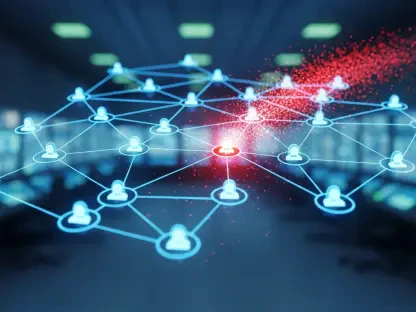The Trump administration recently issued an Executive Order addressing modern cybersecurity challenges by emphasizing the integration of advanced technologies and innovative policies. This groundbreaking directive aims to bolster cybersecurity measures against increasingly sophisticated digital threats. It signifies a response to the growing need for secure software development, post-quantum cryptography, updated encryption protocols, and AI-driven risk management. In addition to these crucial components, the order lays a framework for creating machine-readable policy standards and trust designations, ensuring that Internet of Things (IoT) devices adhere to fundamental security principles.
The Role of Technology in Cybersecurity
Promoting Secure Software Development
One of the principal focuses of the Executive Order is promoting secure software development practices to mitigate vulnerabilities and protect critical infrastructure. This initiative comes at a time when software flaws and breaches have become alarmingly common and detrimental. By integrating security-focused coding practices from the ground up, developers can significantly reduce the opportunity for cyber threats to exploit software weaknesses. The order encourages collaboration between government agencies and tech companies to establish shared standards and implement them effectively across platforms. This approach is thought to be vital in reinforcing a unified front against potential cyber threats that target both public and private sectors. The Executive Order also highlights the necessity to employ post-quantum cryptography, an essential tool in preparing for the eventual rise of quantum computing. Quantum computers, expected to far surpass classical computers’ processing capabilities, pose a significant threat to current encryption methods. Implementing post-quantum cryptography will ensure data remains secure against decryption attempts by quantum technologies. By preemptively adopting these measures, organizations can maintain data confidentiality and protect sensitive information from future technological advancements aimed at undermining current encryption systems.
Artificial Intelligence in Managing Cybersecurity Threats
Artificial Intelligence (AI) is also a key component outlined in the Executive Order, playing a pivotal role in managing cybersecurity threats. AI technologies offer unparalleled capabilities in identifying vulnerabilities and predicting potential threats with greater accuracy than traditional methods. By leveraging AI, organizations can automate routine tasks, freeing up valuable security resources to focus on more complex challenges and strategic initiatives. The deployment of AI-driven solutions grants security teams enhanced threat visibility, allowing them to assess the context of cyber incidents effectively. Tim Miller, Dataminr’s Field CTO, underscores the importance of integrating human expertise with automation. Miller asserts that AI should complement, not replace, human judgment, promoting a cohesive blend of technological and human efforts in order to enhance decision-making capabilities. Such a synthesis maximizes threat visibility, providing more comprehensive insights that allow security teams to respond swiftly and effectively to threats, minimizing potential impacts. This synergy promises a more robust and adaptive cybersecurity infrastructure.
Regulatory Innovations and Compliance
The Potential of Rules-as-Code
In addition to technological advancements, the Executive Order introduces a transformative approach to regulatory compliance through the “rules-as-code” pilot program. This program seeks to automate governance, risk, and compliance (GRC) operations, potentially reducing dependence on labor-intensive manual processes. By translating regulatory policies into code, organizations can streamline compliance verification, ensuring that cybersecurity protocols are consistently and accurately applied. This initiative not only simplifies the way organizations approach regulatory compliance but also enhances efficiency by minimizing errors associated with human oversight. AuditBoard CISO Richard Marcus highlights the importance of balancing policy automation with human oversight, as proper implementation is crucial to its success. Despite the promise of automated GRC processes, precise translation of policy into code is paramount to ensure regulations are interpreted accurately and enforced correctly. Failure to achieve such fidelity could result in misalignments and potential compliance issues. Thus, safeguarding the integrity of this system necessitates close collaboration between cybersecurity specialists and policy makers, fostering an environment where both technology and human input contribute to comprehensive compliance mechanisms.
IoT Security and Trust Designations
The Executive Order also emphasizes critical measures to secure IoT devices, which have become ubiquitous in both personal and professional environments. By establishing machine-readable policy standards and assigning trust designations, the directive aims to ensure these devices adhere to fundamental security principles. This strategic move addresses the alarming rise of IoT vulnerabilities, given that these devices can often serve as entry points for cyber threats. With clear guidelines and trust assessments in place, both consumers and organizations can make informed choices regarding IoT device security, strengthening the overall digital ecosystem. This holistic approach reflects a broader paradigm shift towards a technically-driven yet human-informed cybersecurity strategy. By integrating cutting-edge technology with thoughtful policy frameworks, the Executive Order seeks to create a more resilient and secure digital infrastructure. Adopting these measures promotes transparency and trust, which are essential for maintaining robust cybersecurity in an increasingly interconnected world.
Strategic Path Forward in Cybersecurity
The Trump administration has recently taken a significant step in addressing the modern landscape of cybersecurity threats by issuing an Executive Order. This directive highlights the necessity for incorporating advanced technologies and innovative policies to combat the ever-evolving digital threats facing businesses and government entities. The order is a pivotal move towards enhancing cybersecurity defenses. It underscores the urgency of ensuring secure software development, adopting post-quantum cryptography methods, updating encryption protocols, and employing AI-driven risk management strategies. Besides these critical aspects, the order establishes a framework dedicated to formulating machine-readable policy standards and trust designations. This initiative aims to guarantee that Internet of Things (IoT) devices adhere strictly to essential security principles, thus safeguarding the integrity and privacy of systems connected to the internet. The directive also reflects a broader commitment to strengthening national cybersecurity infrastructure and preparing for future digital challenges.









